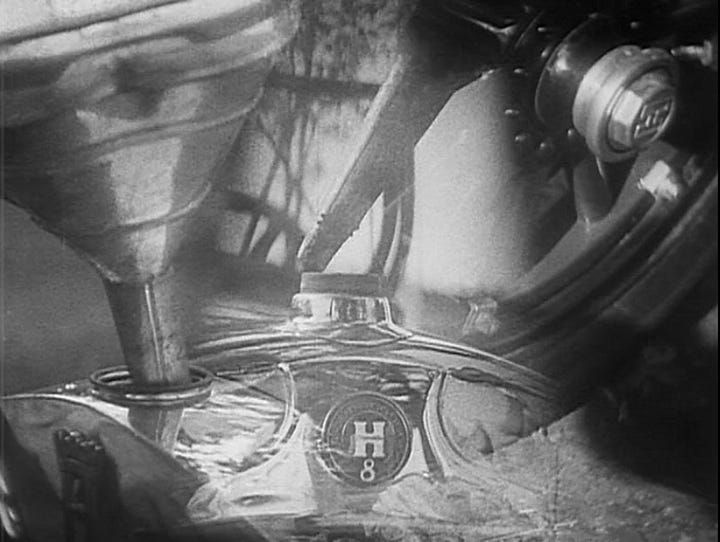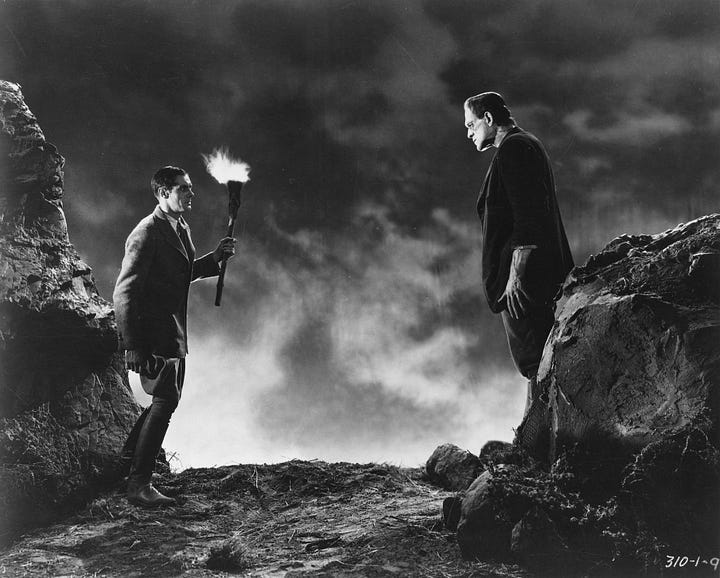The Work of Poetry in The Age of Large Language Models
My poem about AI published in ionosphere
Welcome everyone. I’m very excited to share my latest poem with you.
I’m grateful to Simon Kaeppeli at ionosphere for publishing two (!) of my poems. The issue is in print (available only at a certain place). I’m going to focus here on “The Work of Poetry in the Age of Large Language Models”. I’ll do separate post for the other poem later.
“The Work of Poetry in the Age of Large Language Models” responds to the advent of AI, drawing on Walter Benjamin’s seminal essay in Illuminations, “The Work of Art in the Age of Mechanical Reproduction”. I first read this essay about twenty years ago, when AI existed only in the realms of science fiction. Written in 1935, Benjamin’s essay unpacks some of the possible unintended social, cultural and political consequences of the new technologies of lithography, photography and, most importantly for him, “sound film” (the first ‘talkie’ premiered in 1927). It remains highly relevant for the accelerated pace of technological change in the twenty-first century. Benjamin argues that the original work of art has an “aura” that no reproduction can ever match:
Even the most perfect reproduction of a work of art is lacking in one element: its presence in time and space, its unique existence at the place where it happens to be. This unique existence of the work of art determined the history to which it was subject throughout the time of its existence.
Walter Benjamin, “The Work of Art in the Age of Mechanical Reproduction”, p. 3
The prospect of producing endless perfect copies of a work of art meant that the aura, in Benjamin’s view, would “wither”. Although the concept of the aura of a work of art is probably the aspect of Benjamin’s essay that is most discussed (reproduced?!) in critical theory, the loss of a world where originality and authenticity was essential to art was not necessarily something he mourned. From a Marxist perspective, Benjamin saw in the reproducibility of art, the possibilities of its liberation from what he called the “cult” or “ritual” aspects which contributed to the creation of its aura.
To an ever greater degree the work of art reproduced becomes the work of art designed for reproducibility. From a photographic negative, for example, one can make any number of prints; to ask for the ‘authentic’ print makes no sense. But the instant the criterion of authenticity ceases to be applicable to artistic production, the total function of art is reversed. Instead of being based on ritual, it begins to be based on another practice—politics.
Walter Benjamin, “The Work of Art in the Age of Mechanical Reproduction”, p. 6
For Benjamin, the inventions of photography and film were pivotal. The technology changed the nature of art, changed the relationship of humans to art, changed politics, changed society. Something new was being born and its potential seemed limitless.


In writing this poem, I was also influenced by various essays and commentaries I have read on AI over the past couple of years. Joey Connolly’s essay in Poetry Review, “Notes on ‘COMP’”, which I have mentioned here before, sparked a lot of my thinking about the cross-currents and analogues between AI and poetry, between machine and human. The wholesale, unethical scraping of human thought and creativity which has allowed these Large Language Models to exist and what this means for our collective intellect and language, was another strand. When I’m writing a poem, fragments of others’ words often drift upwards to the surface of my mind, words that I’ve absorbed (scraped?) over years of reading, teaching and writing. Here, it was canonical quotations about “woods” which stuck, so I incorporated them, thinking about the mimicry and pattern recognition of LLMs. Emily Bender calls ChatGPT and other LLMs “stochastic parrots”. Since they speak without consciousness, emotion or actual thought, they produce inaccuracies or ‘hallucinations’ of quotations or even whole poems which superficially seem like real authors but are simply (as G. M. Baker points out), a form of pastiche. What the LLM synthesizes and how this manifests appears meaningful, but can meaning still be present without human connection?
I wish I didn’t feel like I need to say this, but the poem was written entirely by me, without any AI assistance.
Thank you for reading. If you would like to support this newsletter, please do consider liking, commenting and restacking. Your thoughts are much appreciated.
A partial (and probably already out of date) set of essays on AI which contributed to the ideas in this poem:
Joey Connolly, “Notes on ‘COMP’” The Poetry Review, Volume 114:4. Winter, 2024.
G. M. Baker, AI and the Novelist, Substack, 16 May 2022.
Veena D. Dwivedi, “A neuroscientist explains why it’s impossible for AI to ‘understand’ language” The Conversation, 5 June 2025.
ChatGPT is Nothing Like a Human Says Linguist Emily M. Bender, New York Magazine, 1 March 2023.






This is such a creative take. I loved the incorporated fragments of well-known fragments and the hallucinating pulse of the poem. Very well done, and congratulations on your publication!
I love this poem, and I love the consideration that comes before, that we all need to pay attention to as well. Especially considering the enormous ecological cost of AI on top of the hubris of it all.